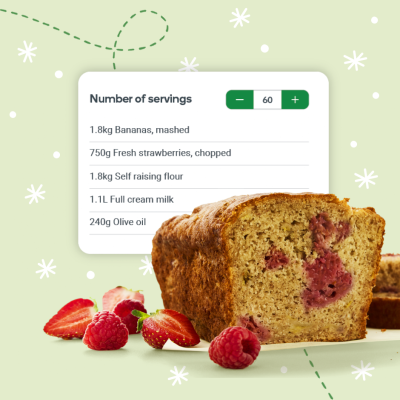Why it pays to use digital technology to simplify the AR reconciliation process
The end of the accounting period need no longer be a frenetic time for your accounts payable department.
Whether it’s end-of-month or end-of year, accounts reconciliation is traditionally a time when accounts payable and receivables teams are at their busiest, putting in long hours to process outstanding invoices, clear up queries from suppliers and update the general ledger. Whether yours is a large or a small enterprise, the stress can be significant.
Few finance leaders are more familiar with the process – and the pressures – than Woolworths Group Transactions Controller Rob Fellowes. His accounts payable division within the Woolworths Financial Shared Services unit handles around 250,000 transactions a week, from 20,000+ suppliers. Historically, it required a Herculean effort to ensure those suppliers were paid on time and that the company’s month-end position reflected the payments made.
That’s no longer the case and end-of-month has been no more stressful than any other time. Automation has enabled the accounts payable team to streamline its activities, eliminate repetitive transactional tasks and errors, and spread the accounting workload evenly across the entire month.
“For us, it is now just another day or week, which is a very good place to be,” Fellowes says.
“Highly automated end-to-end processes mean our team doesn’t have to expend significant additional effort to complete the close.”
Robert Fellowes, Transactions Controller, Woolworths Group.
Here, he explains how Woolworths has optimised its accounting function and improved its service to suppliers.
Moving away from manual mode
The decision to switch from a heavy manual to digital mode was made in 2018. Since that time, Woolworths has implemented a multi-faceted plan to boost efficiency and productivity across its end-to-end procurement and payment functions.
“In accounts payable, there was a range of things that used to slow us down and create bottlenecks,” Fellowes explains. “And with the shift to an automated process, we had far fewer inaccurate requisitions and purchase orders, fewer delays from suppliers when issuing invoices to Woolworths businesses and reduced physical invoices going astray and data entry errors. There was a direct correlation between manual processes and queries and disputes, and those things take time to sort out before a month-end close can be completed.”
“That was one of the drivers for us to shift the bulk of the work that we do into a digital environment.”
Turning to technology
Encouraging suppliers to embrace electronic invoicing was the first step towards a smoother, simpler end-of-month.
While medium and large suppliers had the high-tech capability to begin using electronic data interchange codes, Woolworths recognised that its smaller suppliers were less well placed to make the switch.
“For our small mum and dad suppliers, we introduced a free, secure internet portal that allows them to log on and submit invoices directly from their system to ours,” Fellowes says.
“We now receive 98 per cent of invoices electronically and we’re able to process them consistently across the course of the calendar month. That means we’re not dealing with a large volume of paper transactions at the end of the month.”
Robert Fellowes, Transactions Controller, Woolworths Group.
Meanwhile, suppliers that want to check on an invoice or query a payment can do so via a self-service portal. Advanced workflow technology is used to progress any disputes efficiently, reducing the amount of time the accounts payable team needs to spend getting to the bottom of issues.
Bringing suppliers along on the journey
Making major changes to your accounts payable function is best done in collaboration with your suppliers. For Woolworths, that meant hosting a series of roadshows, presenting at industry forums and making site visits to scores of businesses.
“Not all of our suppliers were set up with technology, so we sent our people to their offices, to sit with them and coach them through the transition one on one,” Fellowes says. “In some cases, we even funded equipment for them.”
As well as showing suppliers how invoicing could be completed digitally, Fellowes’ team reinforced the message about why making the switch made sense.
“For them, it’s all about ensuring on-time payments and reducing the cost burden that’s normally associated with manual invoicing – the printing and postage and the time it takes to manage and maintain all those transactions,” Fellowes says.
Tallying the benefits
For Woolworths, the benefits of automation are equally compelling. The average time taken to action an approved invoice has dropped from five business days to just a few hours. Supplier queries are now resolved in an average of one business day, down from 10 and 12 business days respectively, which is still an industry norm.
Accounts payable employees who used to spend their days plugging away at transactional tasks – sorting mail, completing data entry, managing physical archives and the like – have been able to take on more advanced roles.
But while they’re now in a much more comfortable place when month end rolls around, the team is not standing still.
“We continue to listen and engage our customers and suppliers on how we can continue improving our end-to-end payment processes,” Fellowes says.
“Placing the internal or external customer – in this case, that’s our suppliers – at the centre of any changes you make is the best way to ensure you create real value.”
Robert Fellowes, Transactions Controller, Woolworths Group.
Making life simpler for customers too
Our suppliers are important to us. So are the offices, schools, early learning centres, disability services, charities, construction sites that rely on us every day to provide them with fresh food and everyday essentials. That’s why we’ve introduced Woolworths at Work, a new smart way to buy groceries for business.
It’s a new digital procurement solution that is purpose built to be easy for your teams, help run your business more efficiently and provide you with powerful insights to shape your decisions. And we care about helping to streamline our customers’ accounts payable too, with tools to manage spending and budgets across every layer of their organisation and the ability to receive a single consolidated invoice each month saving them hundreds of hours of admin.



